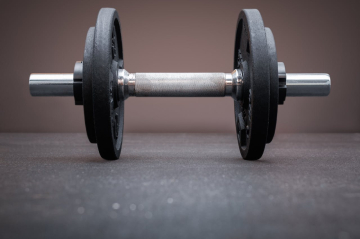The battle between cardio and weight training has been a recurring theme in fitness and health debates. The most common question that comes up is: which of these two forms of exercise is more effective at burning fat? While both cardio and weight lifting can be great for improving overall health and achieving a more toned body, it's important to understand how each contributes to the fat-burning process and what makes it better suited for different goals.
Cardio: Burn Calories and Improve Cardiovascular Health
Cardio, or cardiovascular exercise, includes activities such as running, swimming, cycling, or even brisk walking. These activities are known for their ability to increase the heart rate for prolonged periods, which in turn burns calories and aids in weight loss. Plus, cardio has additional health benefits such as improving heart function and circulation, lowering blood pressure, and increasing lung capacity.
When it comes to burning fat, cardio has an immediate advantage in terms of the number of calories that can be burned in one session. Activities such as running on the treadmill, cycling or swimming can burn a lot of calories in a single session, especially if done for 30 to 60 minutes at a moderate or high intensity. In this context, cardio is effective because it directly targets calorie burning, which can contribute to a caloric deficit, essential for fat loss.
The role of cardio in fat burning:
- Direct calorie burning: Cardio, especially when performed at a moderate to high intensity level, burns a large amount of calories. This caloric deficit is crucial for fat loss, as the body uses fat stores as an energy source when not enough calories are consumed through food.
- Workout efficiency: The amount of calories burned depends on the duration and intensity of the exercise. It is estimated that a 70kg person can burn around 400-600 calories in a 45-minute session of intense cardio, such as jogging at a moderate pace.
- Cardiovascular Benefits: Cardio strengthens the heart and lungs, improves blood circulation and increases stamina, which also indirectly contributes to better overall health.
According to an article from Harvard Health Publishing , regular cardiovascular exercise is key to maintaining a healthy weight and reducing the risk of chronic diseases such as hypertension and type 2 diabetes ( Harvard Health Publishing , 2020).
Weights: Increase Muscle Mass and Metabolism
On the other hand, weight training, also known as strength training, focuses on improving muscle mass and strength through the use of weights and machines. Although this type of exercise is not as effective at burning calories during the activity itself, it has a significant long-term effect on fat burning, since by increasing muscle mass, the body's metabolism also increases.
Weight training takes a different approach than cardio when it comes to burning fat. Although you won't burn as many calories during a weight training session as you would in a cardio session of the same length, the advantage lies in the fact that muscle burns more calories than fat even when at rest. This means that in the long run, having more muscle on your body can increase the amount of calories you burn at rest, which can help reduce body fat more effectively.
The role of weights in fat burning:
- Increased muscle mass: Weight lifting promotes muscle growth, which leads to an increase in your basal metabolic rate. This means your body burns more calories even when you're not exercising, which is beneficial for long-term fat loss.
- Afterburn effect: Strength training, especially high-intensity weight lifting, can cause a temporary increase in metabolism after your workout, known as "afterburn" or excess post-exercise oxygen consumption (EPOC). This means that even after you finish exercising, your body continues to burn calories at a high rate.
- Body Composition: As muscle mass increases, the ratio of muscle to fat in the body changes, which can lead to increased muscle definition and a reduction in visible body fat.
According to a study by the National Institute of Health (NIH), strength training not only improves body composition, but can also increase insulin sensitivity and reduce the risk of metabolic diseases ( National Institute of Health , 2021).
What Is Best For Burning Fat?
The answer is not simple. Both cardio and weight lifting are effective at burning fat, but in different ways and in different contexts. While cardio burns a lot of calories during exercise, weight training contributes to long-term fat burning by increasing muscle mass and metabolism.
For effective fat loss, it's best to combine both types of exercise. Cardio can help burn calories quickly, while weight training can improve body composition and boost metabolism in the long run.
Combining cardio and weights:
- Cardio to burn calories: Performing 30- to 45-minute cardio sessions several times a week is great for increasing your calorie deficit and accelerating fat loss. Activities like running, swimming, or biking are all good options.
- Weights to maintain muscle and improve body composition: Incorporating strength training 2 to 3 times per week can help you build muscle, which will increase your basal metabolic rate and improve the overall appearance of your body.
- HIIT (High Intensity Interval Training): HIIT is a great way to combine the benefits of cardio and strength training. It involves alternating periods of intense exercise with periods of rest or light activity, which can maximize both calorie burn during the workout and increased metabolism after exercise.
Conclusion
Ultimately, both cardio and weight training are effective at burning fat, but they work differently. Cardio burns calories immediately, while weight training helps increase muscle mass and metabolism, which has a long-term impact on fat burning. For best results, it's best to combine both types of exercise and make sure you maintain an adequate calorie deficit through a healthy diet.
Remember that no matter what type of exercise you choose, consistency and commitment are key to achieving your health and fat loss goals. The best option is the one you enjoy the most and can maintain over the long term.
Sources:
- Harvard Health Publishing. (2020). Cardiovascular exercise: The benefits of cardio . https://www.health.harvard.edu
- National Institute of Health. (2021). The benefits of strength training . https://www.nih.gov






